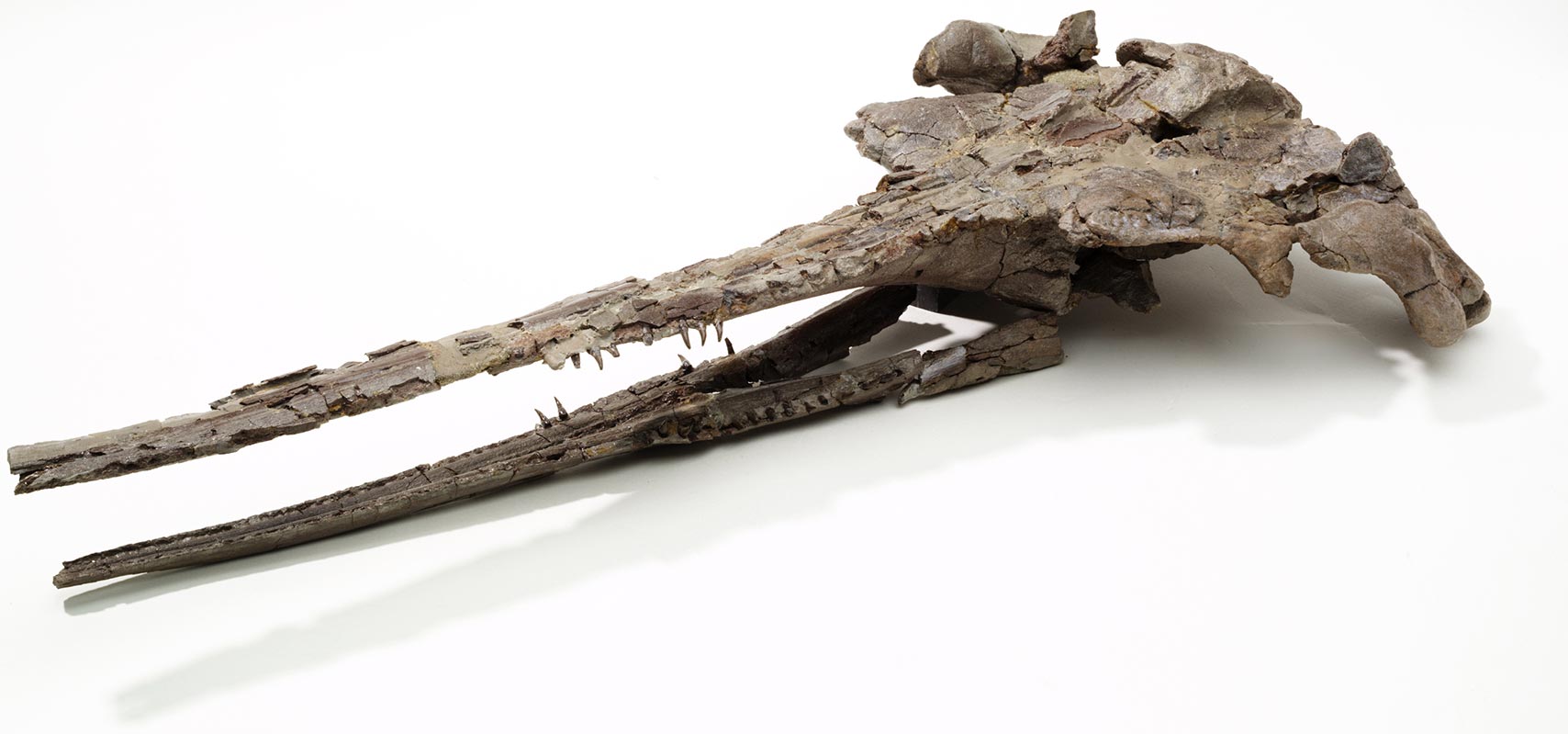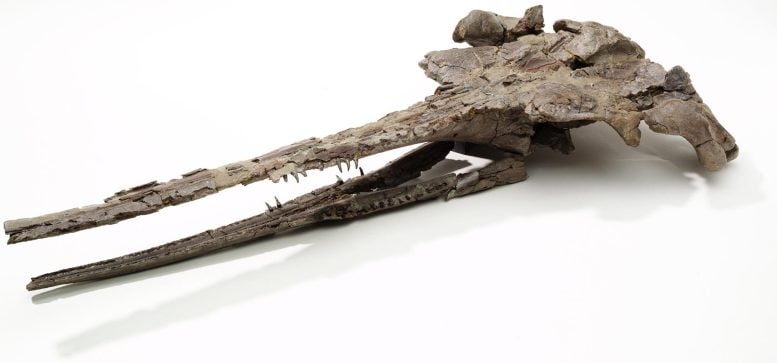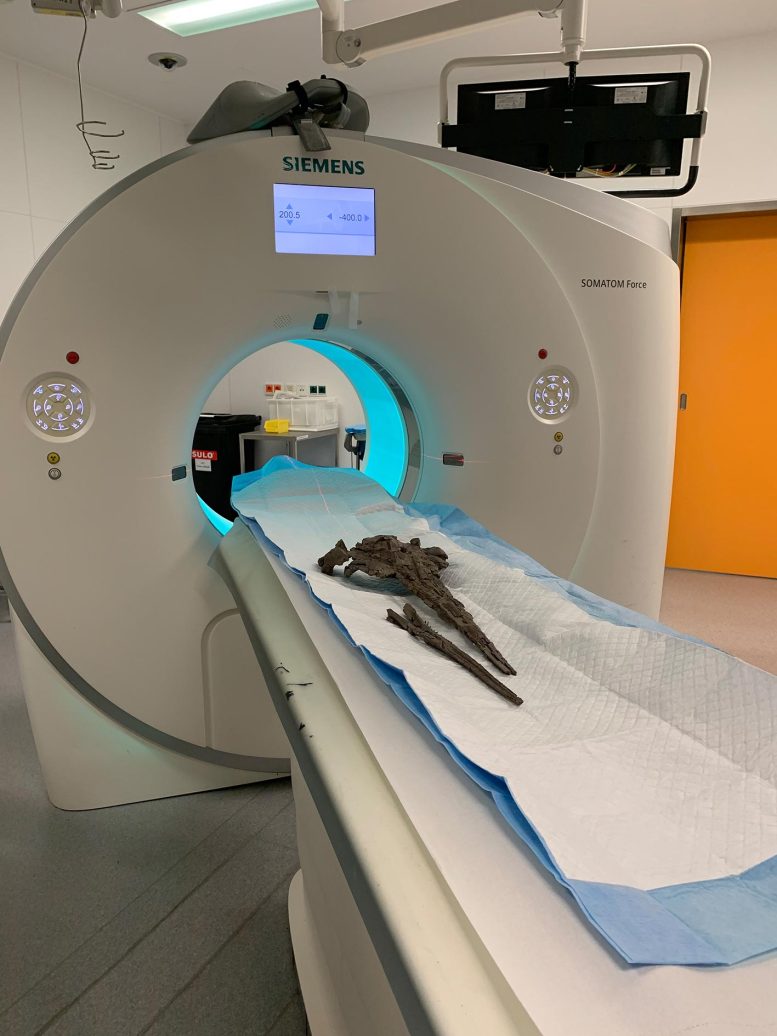

A newly discovered dolphin species from 22 million years ago shows evidence of early echolocation, akin to modern dolphins’ hearing abilities.
A team of researchers led by SNSB paleontologist Gertrud Rößner has discovered a new prehistoric dolphin species. The dolphin lived approximately 22 million years ago in a coastal region of the Miocene Paratethys Sea in present-day Upper Austria. Analysis of its inner ear confirms that the animal had excellent hearing abilities in the high-frequency range, similar to those of modern dolphins.
Unique Fossil and Scientific Classification
The shallow inland sea in which the newly described dolphin lived, along with many other organisms, including various microorganisms, algae, snails, mussels, relatives of squid, and fishes, stretched north of the just emerging Alps. The only known fossil of this dolphin was found at a site near Linz in Upper Austria. It was assigned to a new, previously unknown species and genus, and scientifically named Romaleodelphis pollerspoecki by researchers from the Bavarian State Collection of Palaeontology and Geology (SNSB-BSPG) and the Ludwig-Maximilians-University in Munich, as well as the Senckenberg Research Institute and Natural History Museum Frankfurt.

“All that remains of Romaleodelphis pollerspoecki is its fragmented and incomplete skull with an elongated snout and 102 uniform teeth” reports first author Catalina Sánchez Posada who examined the fossil as part of her master’s thesis.
Evolutionary Significance of Romaleodelphis pollerspoecki
The animal belongs to the toothed whales but differs significantly from all previously known prehistoric representatives of this lineage. Comparisons and complex computer-based analysis of the relationships to other fossil dolphins revealed that Romaleodelphis was probably related to the already extinct, very archaic dolphins of the so-called Chilcacetus clade.
“All previously known fossils of this dolphin lineage come from the north-eastern Pacific and the coasts of South America. The discovery of Romaleodelphis pollerspoecki, a putative European relative of this lineage, could therefore provide important new insights into the origin and evolution of the lineage in the earliest Miocene,” says PD Dr. Gertrud Rößner, curator of fossil mammals from the Bavarian State Collection of Palaeontology and Geology, senior author of the study.

Advanced Auditory Capabilities Revealed
The fossil of the skull is severely compressed and distorted, which made the examination of the skull anatomy particularly challenging. Computed tomography images taken at the Department of Radiology at the Ludwig Maximilians University Hospital in Munich made it possible to examine and reconstruct internal features.
The anatomical reconstruction of the fossil’s inner ear using micro-computed tomography images also yielded astonishing results.

“The shape of the well-preserved bony labyrinth in the skull indicates that Romaleodelphis pollerspoecki was able to hear high-frequency signals,” explains co-author Dr. Rachel Racicot from Senckenberg Research Institute and Natural History Museum.
This makes this dolphin one of the oldest known toothed whales that already had a similarly developed sense of hearing as modern porpoises, for example. These animals are able to communicate in frequency ranges that are beyond the hearing range of their predators. There may also be a connection in the development with the ability of orientation through echolocation, which is typical for dolphins.
The dolphin fossil was unearthed in 1980 by the private collector Jürgen Pollerspöck, who later gave it to the Bavarian State Collection of Palaeontology and Geology for restoration and proper storage. The study has now been published in the Journal of Vertebrate Paleontology.
Reference: “Romaleodelphis pollerspoecki, gen. et sp. nov., an archaic dolphin from the Central Paratethys (Early Miocene, Austria)” by Catalina Sanchez-Posada, Rachel A. Racicot, Irina Ruf, Michael Krings and Gertrud E. Rössner, 5 November 2024, Journal of Vertebrate Paleontology.
DOI: 10.1080/02724634.2024.2401503

